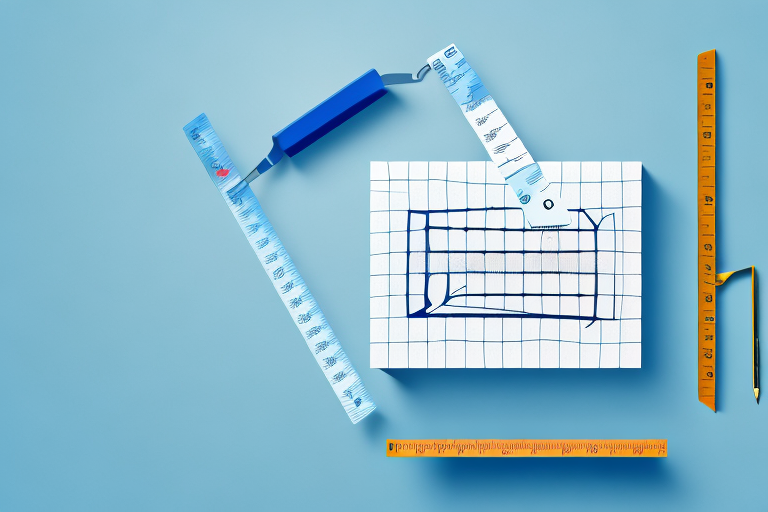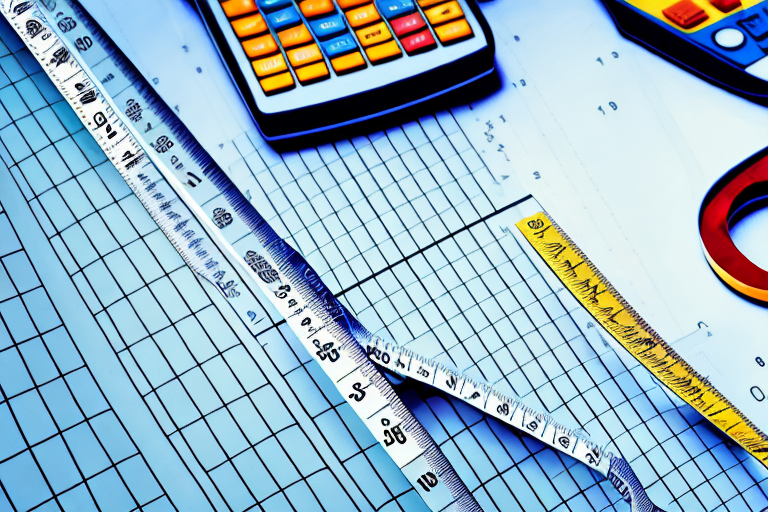The Importance of Dimension Calculators for Accurate Measurements
Traditional measuring tools like rulers and tape measures can be time-consuming and prone to errors, especially when dealing with complex or non-linear shapes. For instance, using a tape measure may lead to inaccurate measurements due to varying tensions when pulling the tape. A dimension calculator helps you avoid such mistakes, ensuring precise measurements regardless of your object's shape.
Moreover, dimension calculators save time by automating calculations that would otherwise be manual and repetitive. This efficiency is especially beneficial when measuring multiple objects or performing complex calculations, allowing for a more streamlined workflow.
Consistency in measurements is another critical advantage of using a dimension calculator. It ensures that measurements are taken uniformly, reducing discrepancies that can arise from manual measurements and enhancing the reliability of your data.
Understanding the Basics of Dimension Calculators
A dimension calculator is an electronic device designed to compute the dimensions of an object by inputting various measurement parameters such as length, width, height, weight, and sometimes thickness. Typically featuring a display screen and a keyboard, these calculators can process multiple units of measurement, providing versatility for different applications.
How Dimension Calculators Work
To calculate the dimensions of an object, you input the necessary values into the calculator. Some advanced models have pre-set formulas that automatically compute additional dimensions based on the input parameters, offering quick and accurate results without the need for manual calculations.
Types of Dimension Calculators: Which One Do You Need?
Choosing the right dimension calculator depends on your specific needs and the complexity of the measurements you require.
Basic Dimension Calculators
These are suitable for simple measurements, such as calculating length, width, and height. They are user-friendly and cost-effective, making them ideal for everyday tasks that do not require advanced calculations.
Advanced Dimension Calculators
Designed for more complex measurements, these calculators can handle calculations like volume, density, and weight. They often include additional functions such as trigonometric and logarithmic operations, making them suitable for professional use in fields like engineering and physics.
Industry-Specific Dimension Calculators
Some dimension calculators are tailored for specific industries such as construction and woodworking. These specialized calculators may include features like built-in unit conversions, material estimators, and project planning tools, enhancing efficiency within these sectors.
Choosing the Right Dimension Calculator for Your Needs
Selecting the appropriate dimension calculator involves evaluating various factors to ensure it meets your measurement requirements.
Measurement Requirements
Consider the types of objects you need to measure and the dimensions required. For instance, measuring heavy cargoes may necessitate a calculator that can handle both weight and volume calculations.
Calculation Complexity
Assess the complexity of calculations you need to perform. If you require advanced calculations, investing in a more expensive calculator with additional functionalities may be beneficial.
Ease of Use
Ensure the calculator is user-friendly, especially if you are not familiar with complex devices. A straightforward interface can significantly reduce the learning curve and enhance productivity.
Budget Considerations
Balance the features you need with your budget. While advanced calculators offer more functionalities, basic models may suffice for simpler tasks and are generally more affordable.
How to Use a Dimension Calculator: A Step-by-Step Guide
- Measure the length, width, and height of the object using a tape measure or ruler.
- Input the measured values into the dimension calculator using the keyboard.
- Allow the calculator to process the inputs and display the calculated dimensions.
For irregularly shaped objects, it may be necessary to take multiple measurements and calculate the dimensions for each section separately. Always double-check your measurements and calculations to ensure accuracy.
Tips and Tricks for Accurate Measurements with a Dimension Calculator
- Ensure precise measurement of the object's length, width, and height.
- Calibrate the dimension calculator before use to maintain accuracy.
- Select the correct measurement unit to avoid conversion errors.
- Follow the manufacturer's instructions meticulously.
Common Mistakes to Avoid When Using a Dimension Calculator
- Incorrectly measuring the size of the object before inputting the values.
- Neglecting to calibrate the calculator before use.
- Inputting incorrect values into the calculator.
- Using inappropriate measurement units.
Avoid overlooking irregularities or asymmetries in the object being measured, as this can lead to inaccurate results. Additionally, use the calculator in an environment free from high levels of electromagnetic interference to ensure precise measurements.
Applications of Dimension Calculators in Various Industries
Dimension calculators are invaluable tools across various industries, including architecture, engineering, construction, and manufacturing. They simplify complex calculations, enhance efficiency, and improve productivity.
In architecture, dimension calculators are used to accurately measure and calculate building dimensions, facilitating the creation of detailed blueprints and designs that meet safety standards.
Within the manufacturing industry, these calculators ensure products are produced to precise specifications, which is critical in sectors like aerospace and automotive where precision is paramount for safety and performance.
In construction, dimension calculators aid in project planning and material estimation, ensuring that projects are executed efficiently and within specified parameters.
Advantages of Using a Dimension Calculator over Traditional Measuring Tools
- Speed and Accuracy: Dimension calculators process complex measurements swiftly and with high precision.
- Reduces Human Error: Minimizes mistakes that can occur with manual measurements and calculations.
- Multiple Measurement Units: Easily convert between different units of measurement without manual calculations.
Additionally, dimension calculators offer enhanced data management by allowing digital recording and organization of measurements, which simplifies data access and analysis. Their versatility extends beyond simple measurements, as they can calculate various dimensions including volume, area, and angles, making them suitable for diverse applications in multiple industries.
Future Trends in Dimension Calculator Technology
Dimension calculators are continually evolving, with advancements integrating artificial intelligence for even more accurate and precise measurements. Future models may feature AI-driven predictive capabilities, enhancing the functionality and reliability of the devices.
There is also a trend towards making dimension calculators more user-friendly and accessible, incorporating larger screens, intuitive interfaces, and voice-activated commands. These innovations will make dimension calculators more versatile and easier to use for a broader range of users.
As technology progresses, we can anticipate further innovations that will expand the capabilities and applications of dimension calculators, solidifying their role as essential tools in various industries.
Comparing Different Brands and Models of Dimension Calculators
When selecting a dimension calculator, it is important to compare different brands and models to find one that best suits your specific requirements.
Look for calculators that offer high accuracy, support multiple measurement units, and fit within your budget. Consider factors such as size and weight, especially if portability is a concern, and ensure the device has a durable design to withstand frequent use.
Additionally, evaluate the user interface and ease of use. Some models come with advanced functions that may require additional training, while others offer a simpler interface that is more user-friendly for quick measurements without extensive training.
By carefully comparing the features and functionalities of various dimension calculators, you can make an informed decision that aligns with your measurement needs and enhances your efficiency and productivity.




















